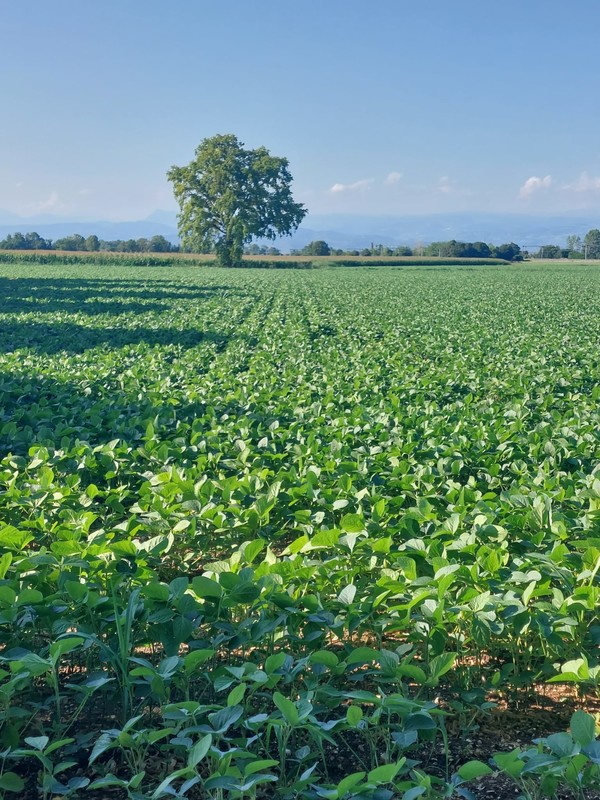
Precision agriculture for rational water management
Technological innovation improves the sustainability of agricultural production. Important in this sense are the Decision Support Systems, IT tools that constantly monitor crops and indicate the correct amount of water to distribute
It is well known that due to climate change in recent years there has been a steady increase in extreme natural events that are increasingly impactful, both in their intensity and their frequency. As widely discussed at COP 28 in Dubai, 2023 was the year with the highest average temperature ever recorded globally. Global warming - it was recalled during the work - is significantly affecting rain regimes in many areas of the planet, where flood phenomena alternate with long periods of drought. The agricultural sector, which is notoriously exposed to climatic variables, suffers most from the consequences of unfavourable years or the damage caused by disasters. For these reasons, in addressing the issue of global warming, the international conferences of the United Nations give the combination of agriculture and food security an absolute central role. In this context, Italy is called upon to make its own contribution of system experiences to address the problems related to climate change.
Fortunately, today the capacity for resistance and resilience of the agricultural sector to climatic conditions (primarily drought) is greatly enhanced by the possibility of using technological tools that fall within the broad sphere of precision agriculture. Among these, an important contribution is made by Decision Support Systems (DSS), which are IT devices designed to provide constant support to farmers in their specific management choices.
In this perspective, also to meet a growing need for innovation and business consulting, a group of agronomists and computer scientists founded a start-up called ‘Central Evaluation’ and developed a DSS (TETHYS) easy to use and very useful. The system, as a first strength, does not require the installation and maintenance of sensors, weather units or other equipment. This greatly reduces investment costs, risks of damage and, in the total absence of physical footprint, does not take away useful space from the agricultural fund. It is therefore a ‘ready-to-use’ technology that can ensure constant monitoring of crops, providing the farmer with an indication of the correct amount of water to distribute in the fields and the timing for doing so.
As one can easily guess, from these indications – based on the interpolation of measured data and weather forecasts – derives not only a substantial water and energy saving, but also a considerable benefit in terms of crop yields. “This technology makes use of advanced environmental modelling, using satellite imagery, soil information and timely and up-to-date weather data. Following the principle of site-specific analysis typical of precision agriculture – explains agronomist Stefano Lo Presti – the evapotranspiration of crops and the water balance are calculated daily, for each small portion of the plot”. The platform, a tool designed to be easy to use for farmers even older, uses a web app that allows you to view the cultivation progress of your plots and the related water needs on the tools widely used today (PC, tablet or smartphone). Obviously we are talking about a patented system that today works well thanks to a long process, first researched and subsequently validated by numerous tests carried out on different cultivars and pedoclimatic contexts, not only in Italy, but also abroad.
As for the experiments of ‘precision farming’ carried out in the field, for example, Lo Presti recalls the one carried out in a plot cultivated with maize on the ‘Corte Zera’ farm near Verona. In this context, a parcel (field A) irrigated with a variable rate pivot was compared with a neighbouring parcel (field B) irrigated with a self-propelled machine. The water distribution phases for field A took place in consideration of the ‘irrigation advice’ provided by the DSS, while for the other field the irrigation mode was carried out following conventional practice. In a preliminary phase, field A was divided into four homogeneous zones for soil characteristics, identified thanks to the use of an electromagnetic induction sensor (TSM-Top Soil mapper). Later it was possible to establish diversified irrigation volumes in relation to the specific water requirements calculated by the TETHYS system for each of the four zones. In this way the watering was carried out at the most appropriate time, that is, just before the water supply was exhausted near the root systems where the water is easily used. This precaution allows you to avoid giving water when it is not needed (avoids wasting water and energy) or to give it later than the needs of the plants (avoids the stress of the plant and drops in production).
In conclusion, the comparison made at the end of the season on irrigation practices conducted in the two plots monitored, showed a significant saving of water (30%) in field A where irrigation had been managed in consideration of the indications deriving from the DSS. In particular, the lower water consumption associated with precision irrigation varies significantly in relation to soil characteristics. For example, in the plot mentioned, the reduction was 15% in the area with looser soil, while a much lower irrigation input was needed where there was loam soil (savings of 38%). Moreover, by comparing plots with similar soils, precision irrigation has ensured a yield that was almost 10% higher than on plots where traditional irrigation was used. The experiment has shown how a precision irrigation realised thanks to the use of DSS TETHYS can guarantee important environmental effects (water and energy savings) and at the same time, thanks to the consolidation of yields, a greater profitability of production.








